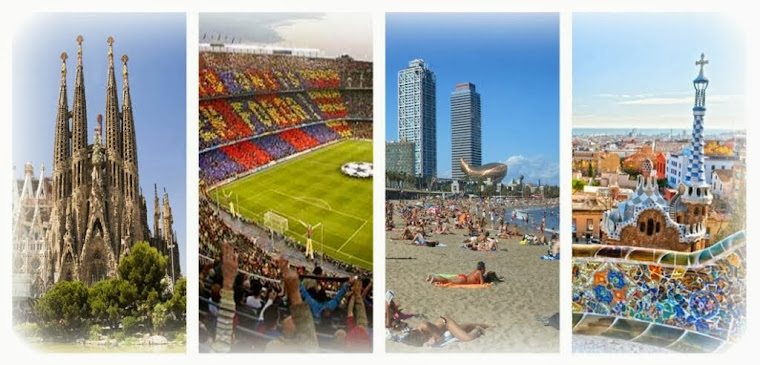You’ll be pretty unlucky if you find yourself in Barcelona on a rainy day – it’s a rarity but it does happen from time to time. No need to be down about it though as there are plenty of things to keep you entertained!
To kick-start the day
Go for breakfast at the beautifully unique We Pudding on Calle Pau Claris, 90. It is like stepping into the world of Alice in Wonderland where you can sip your coffee and nibble on a croissant under a red and white circus-style roof surrounded by mushrooms.
 |
| Things to do in Barcelona in the rain |
Bus tour out of the rain
The rain shouldn’t stop you from exploring Barcelona and a good way to do this is by taking a hop-on hop-off city sightseeing bus tour. The double-deckers are covered so you can still enjoy the views from the top deck without getting wet. There are two routes to choose from, and either one will allow you to explore Barcelona’s must do’s without traipsing through the rain.
On the East Route you can stop off at one of our favourite Gaudí-designed buildings, Casa Batlló, the legendary Sagrada Família and if you fancy brushing up on your Catalan history, take a trip to the informative and entertaining Museu d’Història de Catalunya (Museum of Catalan History). On the West Route you have MNAC (Museu Nacional d’Art de Catalunya), the Caixa Forum which often has exciting exhibitions on display, and the FC Barcelona Experience at Camp Nou which takes you around the stadium and behind the scenes into the team’s changing rooms.
 |
| Things to do in Barcelona in the rain |
In fact, any one of Barcelona’s famous museums or tourist attractions can be done on a rainy day. The upside when it’s raining is you’ll feel less guilty spending an extra five minutes staring at that Picasso painting at the Picasso Museum when you know there’s no tempting sunshine outside. For a more unusual museum experience, how about the Chocolate Museum, (Museu de la Xocolata) where you can learn about the history of your favourite guilty pleasure.
A spot of shopping?
If museums aren’t your thing, then perhaps shopping sounds more appealing. Barcelona’s shopping options are endless, and heading to one of the city’s large malls would be an ideal way to get your retail fix and stay dry at the same time.
Las Arenas is the city’s most interesting shopping centre, converted in 2011 from a bullring. It can be found at Plaça Espanya and has a great range of shops and restaurants, as well as a large cinema complex on the upper floor. The Rock Museum is also housed up here. With an impressive memorabilia collection, the museum walks you through the history of rock music from its origins to the present day.
You could even take a shopping trip a little further out of the city, to the outlet village La Roca, which you can get to by taking La Roca Shopping Bus provided by Sagalés which departs hourly, Monday to Saturday from C/CASP, 34.
 |
| Things to do in Barcelona in the rain |
Aquarium adventure
Another great place to visit, especially if you have kids, is L’Aquàrium de Barcelona. The aquarium in Barcelona is one of the most important marine centres in the world when it comes to the Mediterranean, with 35 tanks, 11,000 animals and 450 different species to discover.
Get out of Barcelona
If you want to try getting some better weather completely out of Barcelona, a good day trip to take is to Sitges. Even if it is grotty in Barcelona, chances are that here, just 35 minutes’ train ride down the coast, you’ll find beautiful sunshine. Sitges is a former fishing village with a whopping total of 17 golden sandy beaches and some great architecture to see. It’s a happening place with lots of bars and restaurants to discover and there is often something going on in the way of festivals too.
 |
| Things to do in Barcelona in the rain |
Cook like a Spaniard
If you have a culinary streak, you might want to spend your rainy day taking part in a cookery class. These tend to be great fun and you get to learn how to cook all sorts of Spanish specialties, from paella to tapas. You can combine your lesson with a trip to the famous Boqueria Market in Las Ramblas where you will learn how to choose the best ingredients. In any case, you simply can’t leave Barcelona without visiting this market where you can spend hours wandering around, soaking up the atmosphere.
We hope this has given you inspiration to embrace your rainy day with open arms! And you never know, you may even be thankful for the rain if you are visiting some of the more popular attractions – the queue will probably be somewhat shorter!













































